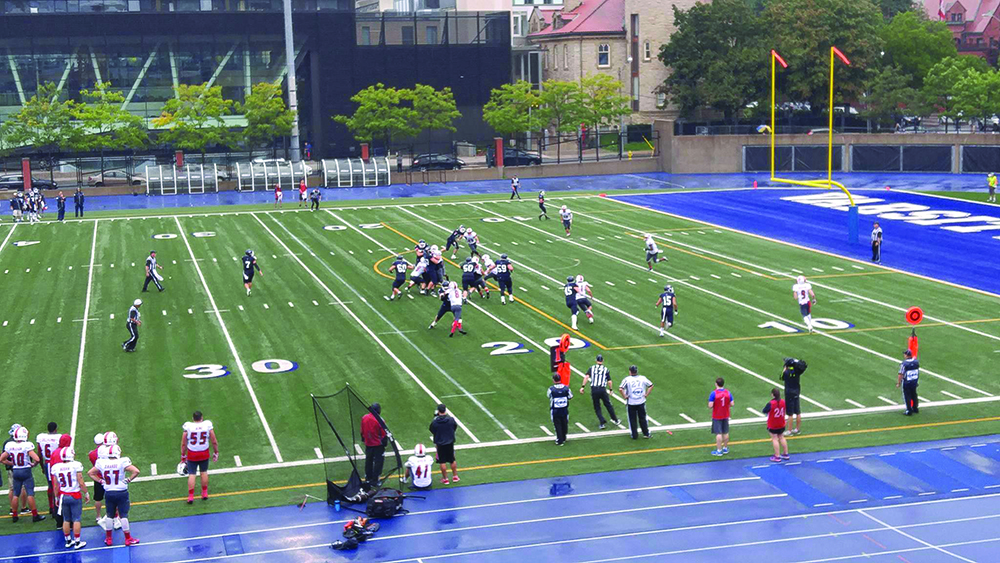Alex Colle | Contributor
Featured photo: The Lions were singing the (Varsity) Blues after falling to U of T on Saturday. | Alex Colle
Three late touchdowns by the formerly winless U of T Varsity Blues proved to be the deciding factor in this year’s stormy Red & Blue Bowl.
Despite poor run defense against the Varsity Blues backfield tandem of Alex Malone and Kaleb Leach, the Lions, now 2-2 on the season, managed to keep it a close game for a majority of the annual match.
After York let in a late first quarter touchdown run by Varsity Blues quarterback Marcus Hobbs, the two teams traded field goals for a majority of the second quarter. With less than one minute left in the quarter, Hobbs heaved a 76-yard touchdown pass to receiver Rahul Madan to end the half with a 17-6 score, in favour of the Varsity Blues.
It took the Lions until the 4:20 mark in the third quarter to finally fight back with a touchdown of their own. Quarterback Brett Hunchak tossed an 18-yard pass to his brother, Colton, to narrow the difference to 24-15 in favour of U of T.
This proved to be the Lions’ only roar of the match, as the Varsity Blues fought back with three unanswered touchdowns in the fourth quarter to end the game at a score of 45-18.
Despite the lopsided score, the match saw sloppy play from both teams, amounting to 258 yards worth of penalties.
What proved to be the deciding factor was the Lions’ poor run defense, which saw Varsity Blues running back tandem Malone and Leach combine for 283 rushing yards alone.
Despite achieving over 500 total yards, the Lions fell victim to untimely turnovers and poor downfield play for the majority of the game.
York will look to reverse their fortunes next week when they face off against the Carleton Ravens at York Stadium on Saturday. Kickoff is at 1 p.m.



Great arcleit, thank you again for writing.
It would be interesting to take the outer limits of sefs-delenfe estimates in which firearms are involved (e.g. 80,000 times a year low and 2.5 million times a year high) and some REASONABLE estimate of the number of times injury or death are prevented and compare it to the violent firearm deaths and other firearm death categories. That is, is it more, the same, or less?